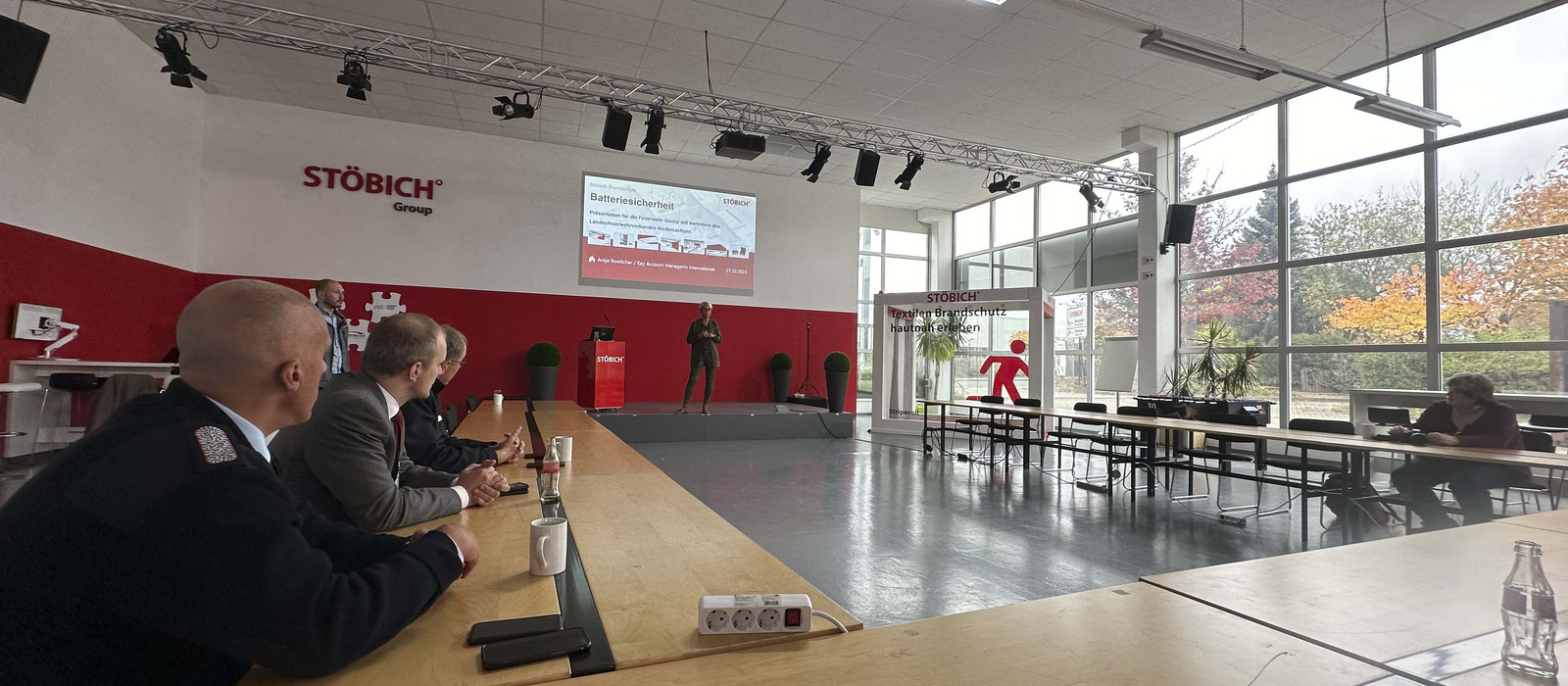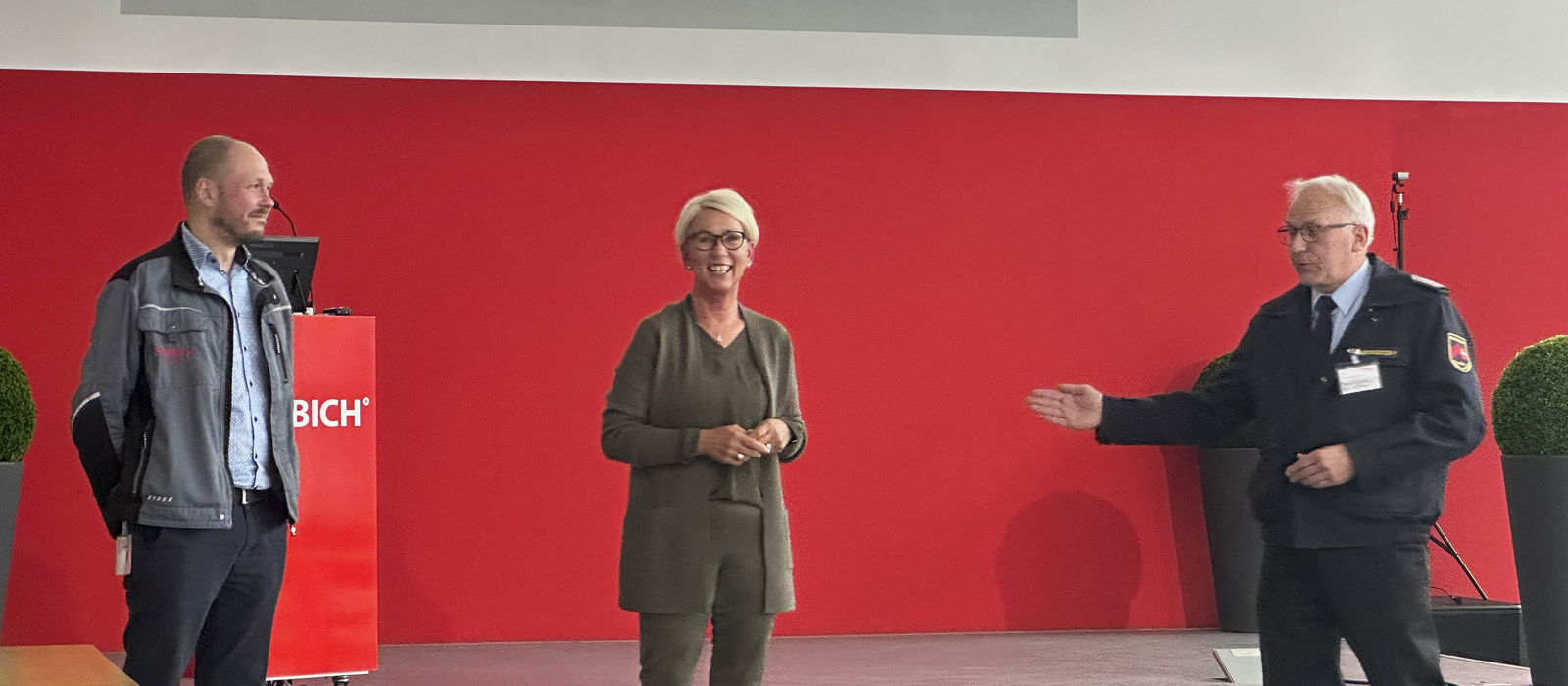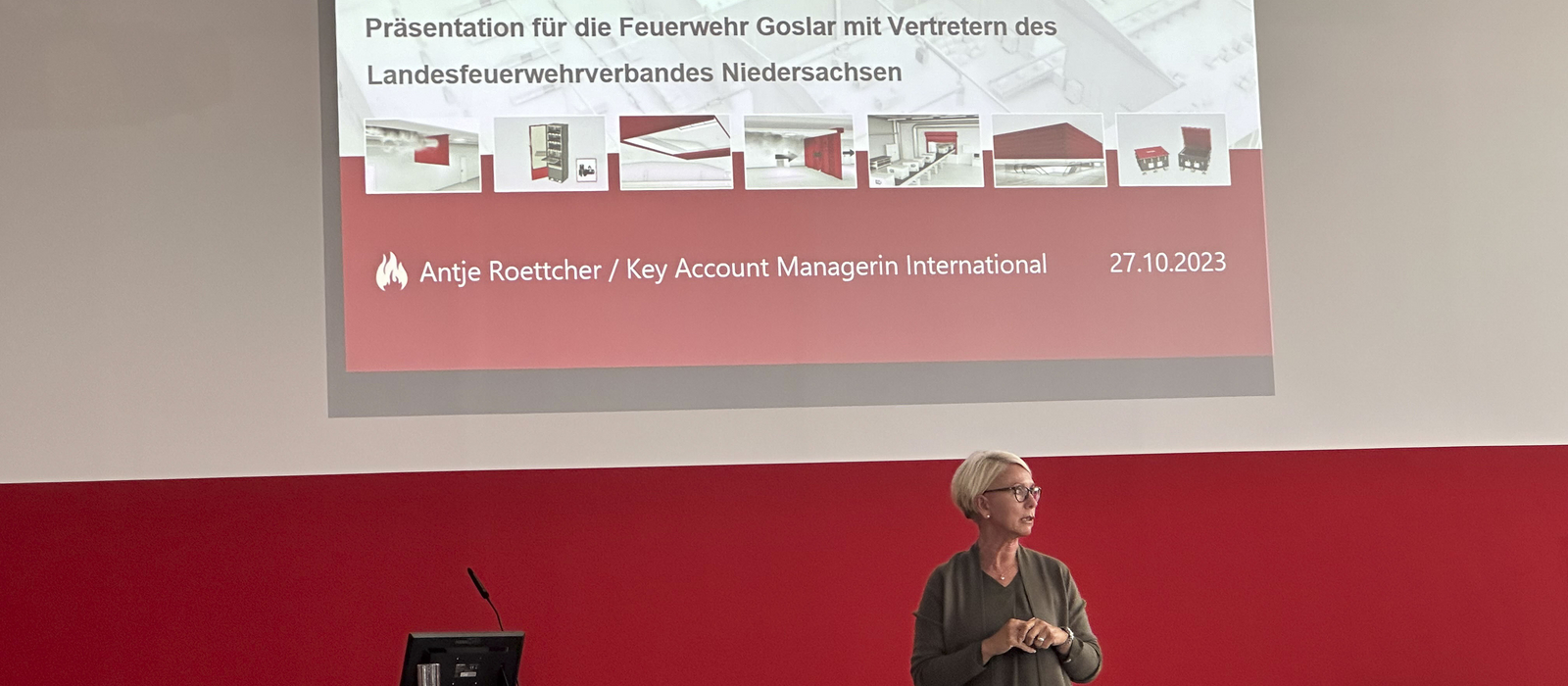
State Fire Brigade Association at STÖBICH
At the end of October, the Lower Saxony Fire Brigade Association held a committee meeting on "Operations, environmental hazards, disaster prevention" at the volunteer fire department in Goslar. What could be more natural than to obtain detailed information from STÖBICH about safety and fire protection when dealing with lithium-ion batteries?
For several years, STÖBICH and the Goslar Volunteer Fire Department have shared an interest in the safe storage or transport of critical energy storage devices. In close cooperation, the fire protection specialists developed clever solutions for lithium-ion batteries that can release hazardous gases in the event of an accident. Such ➥ StrainBox transport boxes from STÖBICH were handed over to the Goslar fire department and were recently used again in the ➥ fire of an electric scooter in Dörnten.
Last Friday, on the occasion of the EUK Committee, we were visited not only by the Goslar district fire chief and his deputy, but also by other district fire chiefs of various Lower Saxony counties, representatives of the Lower Saxony Ministry of the Interior and the president of the Lower Saxony State Fire Brigade Association.
A total of 13 people took part in our information event in the STÖBICH showroom. Among other things, the focus was on Li-ion battery systems (LiBS) and their structure, function and designs as well as the associated fire behavior and hazard potential. After the theoretical presentation of the battery safety systems StrainBox and StrainLock, the participants could get to know the products during a tour. The tour of the battery test center on the STÖBICH premises formed the crowning conclusion.
For our guests it was a "very interesting event with great insights into the dangers of lithium-ion batteries and how to handle them safely with appropriate products." Marc Dinse from STÖBICH concluded: "We are in close exchange with the Goslar Fire Department and are always happy to receive requests for such events. In this way, we can make an important contribution to the safe handling of lithium-ion batteries. The event has again shown that there is also a great need for action in the fire department when it comes to the correct handling of lithium-ion batteries. This applies to operations involving burning batteries as well as when handling their own battery-powered equipment."
Copyright Photos: © Uwe Fricke



